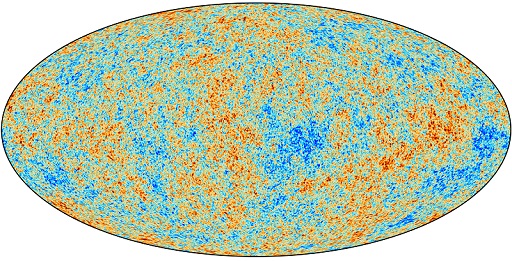5 Light from the edge
Keep in mind that light from near the edge was emitted when the universe was very young, and it would not look the same as it does now. The further we look back in time, the closer to the Big Bang we are seeing. This raises the intriguing question of whether it’s possible to see all the way back to the Big Bang itself. That, surely, would mark the edge of the observable universe!
Unfortunately, the answer is no – we can’t see all the way back to the Big Bang. But it’s possible to get very close! In fact, we can see back to about 380 000 years after the Big Bang. That’s still a very long time in human terms, but only 0.0028% of the age of the universe, taking us back to its relative ‘infancy’. At that point, the sky becomes covered in a glowing fog which prevents us from seeing any further. The fog is very faint in visible light but easier to see at wavelengths around one millimetre (in the microwave part of the spectrum). For that reason, it is known as the ‘cosmic microwave background radiation’ (CMBR). It is very smooth and covers the whole sky.
Figure 7 shows an image of the microwave ‘fog’ covering the whole sky as observed by the Planck space observatory. It is exceptionally smooth – the red and blue areas represent minute differences in brightness of around one part in 10 000. We are looking at the universe when it was just 380 000 years old. The CMBR marks the edge of the observable universe.
What happened when the universe was 380 000 years old? Before that time there were no stars and not even atoms. The universe was full of ionised gas – a plasma – mainly nuclei and electrons, as it was still too hot for atoms to form. The free electrons in the plasma prevented light travelling very far and so space was opaque. As the universe expanded and cooled, the electrons and nuclei combined to form atoms of hydrogen and helium until – at around 380 000 years – the fog cleared. The universe has been transparent ever since.
For all practical purposes, then, the foggy glow of the CMBR marks the edge of our observable universe – currently some 45 billion light years away, and so slightly closer than the theoretical limit. Light now arriving from the CMBR has been travelling towards us for 13.8 billion years, meaning it is the oldest light in the universe.

